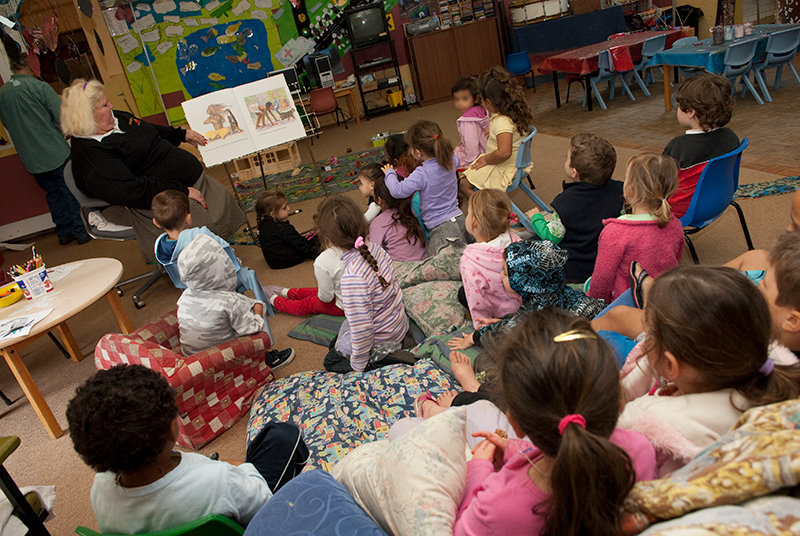International Mother Language Day, which will be observed on Friday 21 February, celebrates linguistic and cultural diversity and draws attention to the loss of languages – 43% of the world’s 6000 languages are considered ‘endangered’, and we lose another language every fortnight.
The United Nations declared 2019 The Year of Indigenous Languages in order to raise awareness of them, not only to benefit the people who speak these languages, but also for others to appreciate the important contribution they make to our world’s rich cultural diversity.
Our track record in Australia is not a proud one. At the time of European settlement in 1788, more than 250 Indigenous Australian languages, with 800 dialectal varieties, were spoken. Today a scant 13 traditional Indigenous languages are still acquired by children. Another 100 or so are spoken to various degrees by older generations, and urgently need to be documented before they are lost.
Early Childhood Educators can play a key role in keeping Australia’s indigenous languages alive and supporting bilingual early learning. In this week’s Amplify! We speak with Annalee Pope, project officer with First Languages Australia, about how indigenous languages are being revived by local communities, and share what early educators can do to help.
It is heartening that many first nations communities are actively engaged in projects to revive their local languages, supported by a federal government funded network of 22 community controlled indigenous language centres.
“When I first heard audio-recordings of my mother’s granny and grandfather, it gave me goosebumps. I had never heard their voices,” says Annalee Pope, project officer with First Languages Australia, where she works on the Priority Languages Documentation Project.
When she heard these recordings Annalee was working at the Bundaberg Language Centre in Queensland on reviving the Wakka Wakka language.
“We had to start from scratch – my work was collating all the historic documents into a database. My mum used to come in and help me as well.
“I taught the children through games, songs and activities. At the end of the year, I was invited to attend the end-of-year graduation (for the children starting school the following year) where the children sang in language.
“Hearing the children confidently singing was a truly overwhelming experience that I will cherish forever.”
Annalee says key to reviving a language is for the local indigenous community to lead the Process.
 “It’s the community that revives the language, learns it and passes it on. They keep the language centre on track to meet the goals and expectations of the community.”
“It’s the community that revives the language, learns it and passes it on. They keep the language centre on track to meet the goals and expectations of the community.”
Successful language revival follows a clear process:
- Identify potential speakers (usually adults) and learners (all ages of children, parents).
- Discover what historical documentation is available, the Australian Institute of Aboriginal and Torres Strait Islander Studies (IATSIS) has written and oral records of many. Aboriginal languages. They help as much as possible and allow you to make copies.
- Through the local language centre you can engage a linguist to help decipher the text documents and recordings. They were mostly made by linguists, so it helps to have a linguist on the team to decipher the notes about the grammar and structure of the language – what are the locally specific word endings, prefixes or suffixes. The linguists then work with the community to redevelop the grammar; work out how to form sentences; develop a standardised sound system – which letters will be used to represent specific sounds.
“Working on putting together my own language, knowing that my children will be able to use it, just fills me up,” says Annalee. “They will have something I never had growing up.”
How you can support local indigenous languages?
- Find out where your nearest Indigenous Language Centre is (there are many smaller local centres as well as the 22 on the Federal map)
- Check out this interactive map showing all First Nations languages spoken in Australia
- Download this comprehensive Languages Resource Guide from Nurragunnawali
- Search www.firstlanguages.org.au for projects and resources
- Learn the Marrin Gamu song
- ABC Education classroom resources for International Year of Indigenous Languages
- Download or buy Indigenous language stories:

You might like this CELA training session
- Acknowledging and Celebrating Aboriginal Australia – A starting point – NESA Registered PD
FIND OUT MORE
Further reading
Next week: How educators can support bilingual early learning
About CELA
Community Early Learning Australia is a not for profit organisation with a focus on amplifying the value of early learning for every child across Australia - representing our members and uniting our sector as a force for quality education and care.